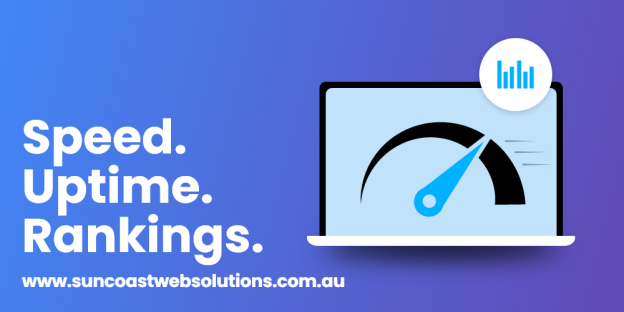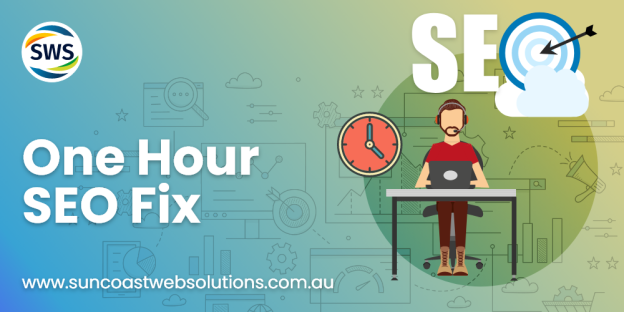What Is Search Intent? How to Identify and Optimize for It

 6th Dec, 2024
6th Dec, 2024
In the world of digital marketing and SEO, understanding search intent is crucial. This article explores the concept of search intent, its definition and importance. You will discover how to identify different types of search intent and optimize your content accordingly.
By reading this article, you will learn about:
- What search intent means and why it matters.
- How search intent can improve user experience and engagement.
- The four main types of search intent:
- Informational
- Navigational
- Transactional
- Commercial Investigation
- Tools like Semrush and Ahrefs for identifying search intent.
- Techniques for structuring your content to match specific intents.
After finishing this article, you’ll have a clear understanding of what search intent is, its significance in SEO, and practical steps to enhance your content strategy by optimizing for search intent.
Understanding Search Intent
Search intent, also known as user intent or keyword intent, is the underlying goal or purpose behind a user’s search query. It represents what a user wants to accomplish when they enter a specific term into a search engine. Understanding search intent is crucial in digital marketing and SEO because it allows you to create content that meets the needs of your audience effectively. By aligning your content with search intent, you can enhance user experience, improve engagement, and ultimately boost your website’s rankings on search engine results pages (SERPs).
The Significance of Search Intent in Digital Marketing and SEO
Understanding search intent plays a pivotal role in:
- Content Creation: Crafting content that answers users’ queries directly leads to higher engagement.
- SEO Strategy: Aligning your SEO efforts with user intent improves organic traffic and reduces bounce rates.
- User Satisfaction: Meeting user expectations fosters trust and encourages return visits.
Types of Search Intent
There are four primary types of search intent that marketers should recognize:
- Informational Intent: Users searching with informational intent seek answers or information about a specific topic. Content aimed at this intent typically includes blog posts, how-to guides, and FAQs.
- Navigational Intent: This type of intent occurs when users are trying to reach a particular website or webpage. Websites must ensure their branding is clear so users can easily find their destination.
- Transactional Intent: Users exhibiting transactional intent are ready to make a purchase or complete a transaction. Content tailored for this intent includes product pages, service offerings, and e-commerce listings.
- Commercial Investigation: Users researching products or services but not yet ready to buy reflect commercial investigation. Content targeting this type combines reviews, comparison articles, and buying guides.
Recognizing these types of search intents enables you to tailor your content accordingly. Each type requires different approaches in terms of format, tone, and style.
Importance of Distinguishing Between Search Intents
Understanding the nuances between these types of search intents allows you to:
- Anticipate what information users are seeking.
- Craft messages that resonate with specific segments of your audience.
- Develop targeted marketing strategies that address each stage of the buyer’s journey.
By identifying which type of search intent corresponds to specific queries, you empower yourself to create more relevant content that can capture user interest effectively. This alignment not only enhances the likelihood of higher rankings on SERPs but also ensures that visitors find what they need quickly and efficiently.
Recognizing the importance of search intent cannot be overstated. As digital landscapes evolve, so do user behaviors and expectations. Keeping an eye on trends related to search behavior will enable you to maintain relevance in an ever-changing environment.
Importance of Identifying Search Intent for SEO
Identifying search intent is a fundamental aspect of content optimization. Understanding what search intent is allows marketers to create relevant and valuable content that aligns with user needs. Here are key reasons why this practice is crucial:
1. Enhanced Content Relevance
Content tailored to specific search intents addresses the actual questions or needs of users. This alignment increases the likelihood of satisfying user queries, leading to higher engagement rates.
2. Improved Rankings
Search engines prioritize content that meets user intent. By identifying and optimizing for different types of search intent, you increase the chances of ranking higher in search results, driving organic traffic.
3. Better User Experience
When users find exactly what they are looking for, it enhances their overall experience on your site. An optimized approach based on search intent fosters trust and encourages return visits.
4. Higher Conversion Rates
Aligning content with transactional or commercial investigation intents can lead to improved conversion rates. Users who find relevant product information or solutions are more likely to make a purchase.
Understanding how to identify search intent also empowers marketers to develop targeted strategies and refine existing content. This ongoing process ensures that your website remains competitive in an ever-evolving digital landscape. The focus should be on creating value for users while meeting their specific needs through well-structured, intent-driven content.
How to Identify Search Intent Effectively
Identifying search intent is crucial for optimizing your content strategy. Understanding the user’s purpose behind their queries allows you to create more relevant and engaging content. Here are key methods to effectively identify search intent.
Utilizing SERP Analysis
Analyzing the Search Engine Results Page (SERP) provides valuable insights into user preferences. When you perform a search, pay attention to:
- Top-ranking results: Review the content of the highest-ranking pages for your target keywords. Look for patterns in their topics, formats, and structures.
- Featured snippets: These often address specific questions or provide quick answers, indicating strong informational intent.
- Related searches: Check for suggestions at the bottom of the SERP that can reveal other relevant queries related to your original search terms.
By observing these elements, you gain a clearer understanding of what users are looking for when they type in specific keywords.
Tools for Analyzing Keyword Intent
Several tools can help you classify keywords by their intent efficiently. Consider using:
- Semrush: This tool allows you to analyze keyword variations and see what types of content rank well for them. You can filter results based on search intent categories, making it easier to understand user motivations.
- Ahrefs: Ahrefs provides detailed insights into keyword performance and SERP analysis. Its Keyword Explorer feature shows you the top pages ranking for a given keyword along with their estimated traffic and click potential.
Using these tools can help streamline your understanding of search intent across various keywords.
Reviewing Content That Ranks Well
Examining high-performing content related to your target keywords reveals critical information about user expectations. Focus on:
- Content format: Note whether the top-ranked pages use how-to guides, listicles, or product reviews. This indicates user preference for specific types of content.
- Tone and style: Assess the language used in successful articles. Is it formal or conversational? Tailoring your tone to match user expectations enhances engagement.
- Depth of information: Determine whether users prefer concise answers or in-depth analyses. Adjusting your content length accordingly can significantly impact its effectiveness.
By implementing these strategies, you can effectively identify different types of search intents. This understanding will allow you to create targeted content that meets user needs more precisely, ultimately improving engagement and satisfaction with your website’s offerings.
Optimizing Content Based on Identified Search Intents
Aligning your content structure with the identified search intent enhances user satisfaction and improves your chances of ranking higher in SEO. When you understand what users are looking for, you can tailor your content to meet their expectations effectively. Here are some key strategies to consider:
Aligning Content Structure
- Match the User’s Goal: Ensure that your content directly addresses the specific intent behind a user’s query. For example, if the intent is informational, provide comprehensive answers or guides. If it’s transactional, streamline paths to purchase.
- Use Clear Headings and Subheadings: This helps users navigate easily through your content. Each section should reflect the identified search intent, making it easy for users to find what they need quickly.
- Incorporate Relevant Keywords: Using keywords that align with the search intent can significantly boost your visibility in SERPs. Integrate these keywords naturally throughout your content.
Importance of Content Formats
Selecting the right content format plays a vital role in optimizing for better ranking in SEO. Different formats cater to different intents:
- How-to Guides: Ideal for informational intent. These provide step-by-step instructions that answer common questions or solve problems. Use bullet points and numbered lists within these guides to enhance clarity.
- Product Pages: Best suited for transactional intent. These pages should include detailed product descriptions, high-quality images, and clear calls-to-action (CTAs) that facilitate easy purchases.
- Comparison Articles: Effective for commercial investigation. These articles help users evaluate options before making a purchase decision. Incorporate tables or charts for side-by-side comparisons.
Choosing the appropriate content format not only meets user expectations but also drives engagement.
Key Takeaways
Optimizing content based on identified search intents is essential for effective digital marketing. By aligning content structure with user goals and employing the right formats, you create a more engaging experience that satisfies user needs while improving SEO performance. Keep refining these strategies as you monitor engagement metrics and adjust accordingly to maintain relevance in an ever-evolving digital landscape.
Enhancing User Experience through Content Structure and Readability
Creating a seamless user experience requires careful attention to content structure and readability. When users are able to navigate your content effortlessly, it enhances their experience and engagement significantly. Consider implementing the following techniques:
Techniques for Improving Readability
- Headings and Subheadings: Break your content into sections using clear, descriptive headings. This allows readers to scan easily and find the information they need quickly.
- Bullet Points: Use bullet points for lists or key takeaways. This format presents information in digestible chunks, making it easier for readers to absorb crucial details.
- Short Paragraphs: Aim for concise paragraphs with a maximum of three to four sentences. This prevents overwhelming the reader and maintains their focus.
Use of Visual Assets
Incorporating visual elements can greatly support content engagement. Utilize these assets effectively:
- Images: Relevant images can illustrate concepts or products, capturing attention and breaking up text-heavy sections.
- Infographics: Summarize complex data or processes visually. Infographics make it easier for users to understand key points without reading extensive text.
- Videos: Engaging videos can provide tutorials or product demonstrations, offering an alternative method of conveying information that caters to different learning preferences.
While structuring your content, keep in mind that enhancing user experience is about creating a balance between informative text and engaging visuals. When users feel that the content is easy to navigate and visually appealing, they are more likely to stay longer on your site, consume more information, and potentially convert into customers. Implementing these strategies will not only improve readability but also foster a more inviting digital environment that encourages interaction with your brand.
Tools and Resources for Keyword Analysis in Relation to Search Intent
Identifying search intent requires effective tools that can analyze keywords and their associated behavior. Here are some popular options:
1. Google Keyword Planner
Ideal for uncovering keyword ideas directly from Google. This tool provides search volume, competition levels, and historical data, making it easier to align your content with user intent.
2. Keyword Magic Tool (Semrush)
This tool excels in generating extensive keyword lists. It allows you to filter keywords based on intent, providing insights into informational, navigational, transactional, and commercial investigation queries.
3. Ahrefs Keywords Explorer
Offers a comprehensive look at keyword metrics, including clicks and return rates. Ahrefs categorizes keywords by intent, allowing you to tailor content accordingly.
4. Ubersuggest
A user-friendly option that presents keyword suggestions along with search volume, SEO difficulty, and paid difficulty. It also highlights content ideas based on popular searches related to your keywords.
Benefits of using these tools include:
- Enhanced understanding of user needs.
- Ability to optimize content strategy effectively.
- Improved chances of ranking higher in SERPs.
Utilizing these resources will empower you to analyze keyword intent thoroughly, thus aligning your content with what users actively seek.
Continuous Monitoring, Adjustment, and Conclusion
Monitoring keyword performance in relation to search intent is essential for effective SEO. Regular evaluation helps determine how well your content meets user expectations. Here are key aspects to consider:
1. Ongoing Evaluation
Track keyword rankings and user engagement metrics. Tools like Google Analytics and SEMrush provide insights into click-through rates (CTR) and bounce rates, indicating how well content aligns with search intent.
2. Strategies for Adjustment
- Content Updates: Refresh outdated content to enhance relevance. Incorporate new data or insights that cater to the current search intent.
- Keyword Reassessment: Periodically review your keyword strategy. Keywords may evolve, requiring a shift in focus based on changing user behavior.
- A/B Testing: Experiment with different headlines, meta descriptions, and content formats. Analyzing the performance of these variations can reveal what resonates best with your audience.
Integrating search intent into your overall SEO strategy requires a dynamic approach. The digital landscape is ever-changing; staying agile ensures that your content remains relevant and effective.
By prioritizing search intent in your optimization efforts, you enhance user satisfaction, which translates into improved rankings over time. Optimizing for search intent is not a one-time task but an ongoing process that demands attention and adaptation as trends shift.
FAQs (Frequently Asked Questions)
What is search intent?
Search intent refers to the underlying motivation or purpose behind a user’s search query. It is crucial in understanding what users are looking for, which helps in optimizing content to meet their needs effectively.
Why is identifying search intent important for SEO?
Identifying search intent is vital for content optimization as it directly impacts user experience and engagement. By aligning content with user intent, websites can improve their relevance in search results, leading to higher rankings and increased traffic.
What are the different types of search intent?
There are four main types of search intent: Informational (seeking knowledge), Navigational (looking for a specific website), Transactional (wanting to make a purchase), and Commercial Investigation (researching products before buying). Understanding these types helps tailor content accordingly.
How can I identify search intent effectively?
Effective identification of search intent can be achieved through analyzing Search Engine Results Pages (SERPs) for keywords, utilizing tools like Semrush or Ahrefs, and reviewing high-ranking content for specific queries to understand user preferences.
How should I optimize my content based on identified search intents?
To optimize content based on identified search intents, align the structure and format of your content with what users expect. For instance, use how-to guides for informational queries and product pages for transactional intents. This ensures that the content meets user expectations.
What tools can help analyze keyword intent?
Several tools can assist in analyzing keyword intent, including the Keyword Magic Tool and platforms like Semrush and Ahrefs. These tools provide insights into keyword performance and user behavior, allowing marketers to refine their SEO strategies effectively.
we are your one-stop internet marketing solution on the sunshine coast!

 07 5479 3888
07 5479 3888









